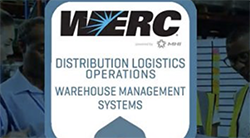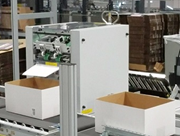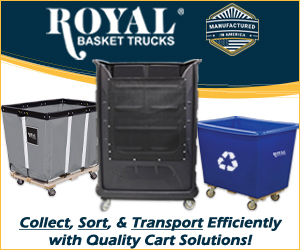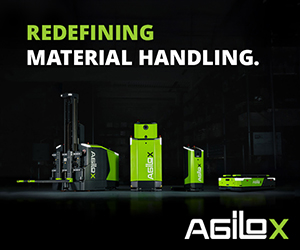All the great content from MODEX 2024 lives on digitally at modexshow.com! We’ve created this digital entry site to help you find the 1,200 exhibitor showcases, 200 on-floor seminars and 5 keynotes, that happened at MODEX 2024 in Atlanta this past March.
|
In supply chain, perhaps no question is asked more often than “where’s my stuff?” Herein lies the promise of real-time location systems (RTLS). Myriad devices connect wirelessly to shared data that helps various technologies pinpoint an item, case, pallet, cargo container or vehicle’s geospatial position—all synthesized (and, optimally, synchronized) by software that can be accessed by anyone seeking the answer to “where’s my stuff?”
|
While AI does have potential for resolving some last mile issues, it is just one part of an overall solution. It will take a combination of technology and human intelligence to take last mile delivery to the next level.
|
Predictive and preventative maintenance is essential to automated warehouse operation efficiency.
WERC has released a new course that quickly educates employees on warehouse operations. The Distribution Logistics Operations course is the fourth in the Distribution Logistics Education Program. It is designed to provide a comprehensive overview of the intricacies of managing warehousing and DC operations.
|
The Material Handling Education Foundation, Inc. (MHEFI) has proudly announced the distribution of $231,700 in scholarships to 61 material handling, supply chain and logistics students for the 2024/2025 academic year. This marks the highest amount ever awarded by MHEFI, reflecting its commitment to supporting education in material handling, logistics and supply chain management.
Autonomous and semi-autonomous vehicle technology is on the cusp of commercializing solutions to solve first- and middle-mile supply chain inefficiencies, enhance productivity, improve customer satisfaction and reduce the cost of moving goods.
|
In the eyes of some, the port industry once appeared reluctant to adopt sophisticated technological solutions to strengthen their operations. However, that has shifted dramatically in recent years as technology is being integrated into the port field in a way that represents “a true change.”
WERC 2024 is the only conference this year focused on the trends and tech impacting warehouse and DC operations! Join your peers from June 2-5 in Dallas, Texas for learning and networking.
|
Sustainability mandates are gaining steam against a backdrop of high interest rates, high labor costs and elevated costs. For many businesses, this push to embrace sustainability may appear like another cost center adding to the cost pile-on that threatens corporate profitability. While that can be true, it does not need to be the case. Several sustainability strategies can potentially help reduce your environmental footprint while also improving your cash flow.
|
The call for rail electrification is spurred by growing interest in the reduction of emissions and mandates. According to the International Energy Agency, electric rail, which accounts for over 85% of passenger rail activity and 55% of freight movements globally, does not emit any direct CO2 emissions.
One of the most impactful types of technology employed in modern warehouses and distribution centers is RFID sensor systems. RFID provides multiple ways to track and manage products and assets in the supply chain.
For retailers struggling to speed up the last mile of delivery, it could be productive to look backward to the middle-mile. At the heart of that mile is the distribution center (DC).
Are dark stores here to stay, or are they just a supply chain experiment spurred on by a singular event and destined to fizzle out? That’s a question grocery chains and other online retailers will grapple with over the next few years as they continue to adapt to changing consumer preferences.
Diversity, equity and inclusion (DEI) efforts require the backing of top leaders. But, as it turns out, these efforts also require the support of middle managers, who often are also the leaders stretched the thinnest and most likely to be juggling a range of competing priorities.
|
In the relentless pursuit of progress in the logistics and manufacturing industry, driven by technological advancements like advanced robotics and RFID systems, a crucial aspect often remains in the shadows: the safety of workers and the protection of machinery.
The loading dock is a flashpoint for safety, with approximately 25% of warehouse accidents happening in the space, according to OSHA. That makes it essential for the material handling industry and every organization with a loading dock to prioritize loading dock safety.
|


















